What Is a Reed Switch and Modern Applications of Reed Switches
2024-01-19
4681
Catalog

Figure 1: Reed Switches Are Everywhere
Definition and History of Reed Switch
Proposed in 1922 by Professor Valentin Kovalenkov at the Petrograd Electrotechnical University, the reed switches, both delicate and robust, marked a significant innovation. It wasn't until 1936, after fourteen years of rigorous research and development, that Walter B. Ellwood at Bell Telephone Laboratories refined this invention, shaping it into the reed relay form familiar to us today.
The design of the reed switch is a study of simplicity and elegance. Within a glass shell, it harbors a pair of ferromagnetic flexible metal contacts. These contacts, ordinarily open in the absence of an external magnetic field, swiftly close when such a field is introduced, permitting the flow of current. Intriguingly, they can also be engineered to open automatically in response to a magnetic field, enhancing control flexibility. This mechanism, predicated on magnetism rather than mechanical operation, enables the reed switch to quickly and accurately respond in diverse applications.
Delving into its various uses, the reed switch has found its way into an array of modern electronic equipment. From its initial role in telephone switching systems, it has expanded into the realms of advanced security alarm systems, sophisticated medical devices, and even household appliances. Its compact design coupled with high reliability makes it especially fitting for applications that demand precision and swift response, such as sensors and metering devices. Equally, its robustness proves invaluable in extreme environments, accommodating equipment that operates under severe temperatures.
Adding to its virtues, the reed switch's unique design offers energy efficiency. Its operation, independent of electrical power, ensures minimal energy consumption in standby mode. Furthermore, its small size renders it perfect for miniaturized electronic devices, facilitating the creation of more compact, lighter electronic products.

Figure 2: Reed Switch
Working Principle of Reed Switch
The reed switch showcases an ingenious design, its core marked by two ferromagnetic blades separated only by a minuscule gap. As magnets near, a magnetic pull draws the blades together. They close. This action, dictated by the magnetic force, results in a seamless circuit, ensuring smooth current flow. Such a unique closing mechanism lends the reed switch its versatility, making it indispensable in numerous automation and electronic control systems.

Figure 3: How Reed Switches Work
Within these switches, the contact materials are selected with great care. The goal is twofold: optimal performance and unwavering reliability. Common choices include tungsten and rhodium, metals celebrated for their electrical conductivity and resistance to corrosion. In certain specialized designs, mercury is employed for its superior electrical stability. These contacts, ensconced in a glass shell filled with inert nitrogen gas, are more than insulated. They are shielded against oxidation and corrosion and also safeguarded against potential sparks during the switch's closing moments.

Figure 4: Contact Materials
Reed switches demonstrate remarkable versatility across a broad spectrum of applications. Their design adaptability renders them suitable for an array of uses, ranging from simple circuit controls to sophisticated sensor systems. Take liquid level monitoring as an example: here, reed switches serve as exquisitely sensitive sensors, adept at detecting liquid levels with precision. Moreover, their applications extend to security and alarm systems, automation technology, precision measurement instruments, and the intricate world of automotive electronics. The compact size and high reliability of these switches make them a preferred choice in these varied fields.

Figure 5: Detecting Liquid Levels
Energy efficiency also plays a significant role in the popularity of reed switches. Their almost negligible power consumption in standby mode makes them particularly attractive for energy-sensitive applications. Coupled with their high sensitivity and quick response, reed switches are invaluable in systems that demand rapid action.
Real World Applications of Reed Switches
Reed switches are known for their precision and reliability. Let's delve into some specific examples that showcase their versatility:
Reed Relay in Telecommunications: Reed relays respond extremely quickly, and their fast switching capabilities mean smoother communication between users, reducing the possibility of call interruptions. Secondly, the reliability of reed relays is very high, which ensures the stable operation of the telephone system, especially under high load conditions. Finally, this relay also features long life and low maintenance costs. Especially in the 1970s and 1980s, reed relays were widely used in the British TXE series of telephone exchanges.

Figure 6: Reed Relays
Reed Sensors in Security: Commonplace in security systems, these sensors are integral to anti-theft alarms for doors and windows. An illegal opening? The magnetic reed sensor catches this, altering the magnetic field, and triggering an alarm. This mechanism is a staple in both residential and commercial security setups.
Flip-top Design in Portable Devices: Clamshell phones and laptops utilize reed switches to discern whether they are open or closed. Closing the lid? The reed switch smartly switches the device to sleep mode, conserving battery life.
Proximity Sensors in Industrial Automation: Reed switches serve as proximity sensors, a vital component in automating industries. On an assembly line, for instance, they meticulously ensure a component is exactly where it should be, safeguarding the machine's proper function.
Security Alarms: In devices like smoke detectors and carbon monoxide alarms, the reed switch is the linchpin, triggering the alarm when danger looms.
Meteorology and Wind Speed: Reed switches measure wind speed. Working in tandem with a wind vane, they accurately gauge both speed and direction.
Liquid Level Sensors: In everyday machines like washing machines and water tanks, reed switches play a preventive role. In a washing machine, for example, they keep water levels in check, averting any possibility of overflow.
Safety in Household Devices: Power tools and appliances leverage reed switches for safety. Take a food processor – it only starts when the reed switch confirms the lid is correctly in place, a design choice that prevents injuries.
Comparison Between Reed Switch and Hall Effect Switch
Reed switches and Hall effect switches diverge in their unique features and advantages for modern technology applications. Let's delve into specific examples that highlight their roles in practical scenarios:
Power systems harness reed switches for their exceptional electrical isolation. Consider high-voltage circuits where reed switches control current flow. Their low contact resistance minimizes energy loss, boosting efficiency. Moreover, they combat arcing and sparking, enhancing safety.
In the automotive realm, Hall effect sensors shine, particularly in systems favoring miniaturization and low power consumption. Picture their role in car anti-skid braking systems (ABS), where they track wheel speed. Their compact size and energy efficiency are assets here.

Figure 7: Car Anti-skid Braking Systems
Reed switches thrive in harsh environments. Take oil and gas extraction: here, magnetic reed switches monitor valve statuses. They withstand high pressure, extreme temperatures, and corrosive conditions, exemplifying reliability.
Consumer electronics, like smartphones and tablets, integrate Hall effect sensors. Why? Their small size and low power demands. They detect lid movements, aiding in power conservation by turning off screens automatically.
Household appliances—think washing machines and refrigerators—also utilize reed switches. Monitoring doors, offer unmatched durability and consistent performance.

Figure 8: Hall Effect Sensors Have Current Flowing Through a Conductor. A Magnetic Field Perpendicular to the Direction of the Current Causes Changes in the Current. Changes in Current Activate the Hall Effect.
After dissecting reed switches, from their historical evolution to varied applications, we recognize their inherent value and versatility. They excel in both traditional telecommunication systems and contemporary smart devices. A comparative analysis with Hall effect switches underscores their suitability and strengths across different settings. As technology advances, reed switches and other magnetic sensing technologies are poised to evolve, promising more efficient, reliable industry solutions. The journey of the reed switch isn't just an electronic engineering tale. It's a narrative of human ingenuity and engineering feats.
 ABOUT US
Customer satisfaction every time. Mutual trust and common interests.
ABOUT US
Customer satisfaction every time. Mutual trust and common interests.
function test. The highest cost-effective products and the best service is our eternal commitment.
Hot Article
- Are CR2032 and CR2016 Interchangeable
- MOSFET: Definition, Working Principle and Selection
- Relay Installation and Testing, Interpretation of Relay Wiring Diagrams
- CR2016 vs. CR2032 What’s the difference
- NPN vs. PNP: What's the Difference?
- esp32 vs stm32: which microcontroller is better for you?
- LM358 Dual Operational Amplifier Comprehensive Guide: Pinouts, Circuit Diagrams, Equivalents, Useful Examples
- CR2032 VS DL2032 VS CR2025 Comparison Guide
- Understanding the Differences ESP32 and ESP32-S3 Technical and Performance Analysis
- Detailed Analysis of RC Series Circuit
 Guide to NEMA 17 Stepper Motors: How They Work, Advantages and Disadvantages, How to Use Them, and Their Application Scenarios
Guide to NEMA 17 Stepper Motors: How They Work, Advantages and Disadvantages, How to Use Them, and Their Application Scenarios
2024-01-19
 Radio frequency Technology Panorama
Radio frequency Technology Panorama
2024-01-16
Hot Part Number
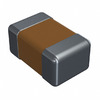 08051A151JAT2A
08051A151JAT2A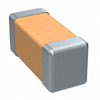 C0402X6S0G471K020BC
C0402X6S0G471K020BC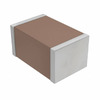 CGA5H3C0G2E562J115AA
CGA5H3C0G2E562J115AA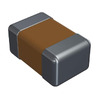 08051C332K4Z2A
08051C332K4Z2A T494D106K035AT
T494D106K035AT T356B105K050AT
T356B105K050AT F930G157KBA
F930G157KBA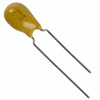 TAP224K050CCS
TAP224K050CCS F950G686KSAAQ2
F950G686KSAAQ2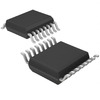 CY24204ZXC-3
CY24204ZXC-3
- PI3B34X245BE
- MP2489DJ-LF-Z
- RT2875BQGCP
- MC7447AHX1420LB
- VE-222-MX
- LC4512V-75FTN256I
- VE-271-IW
- 6MBP50RA060-60
- MCC170-16I01
- T491C685K020ZT7280
- ADSP-2186BSTZ-160
- XC6VLX130T-L1FFG784I
- MC74HC4053AFELG
- UCC27524AD
- DAC0800LCM
- T491C335M035ZTAC00
- LM536025QPWPRQ1
- LTC3850IUF#TRPBF
- TPS62230DRYT
- 74FCT16373CTPVCG4
- ADP3335ARMZ-2.5
- AK6417CH-E2
- IDT72V8981DB
- LM4881MM
- MAX1645BEEI-T
- MN101E31GAB1
- MSM6512B
- S908GZ60E1CFAER
- TFSC10051700-2306A2
- TLC32044CFN
- GRM21BB31H475KE51L
- GT24C02-2ZLI-TR
- MD2811-D16-V3Q18
- ST90T28ZC6
- ZT232ECN
- ERA3AEB224V
- ADV7123JST330
- EL4332CSZ.
- AD7476ARTZ-R